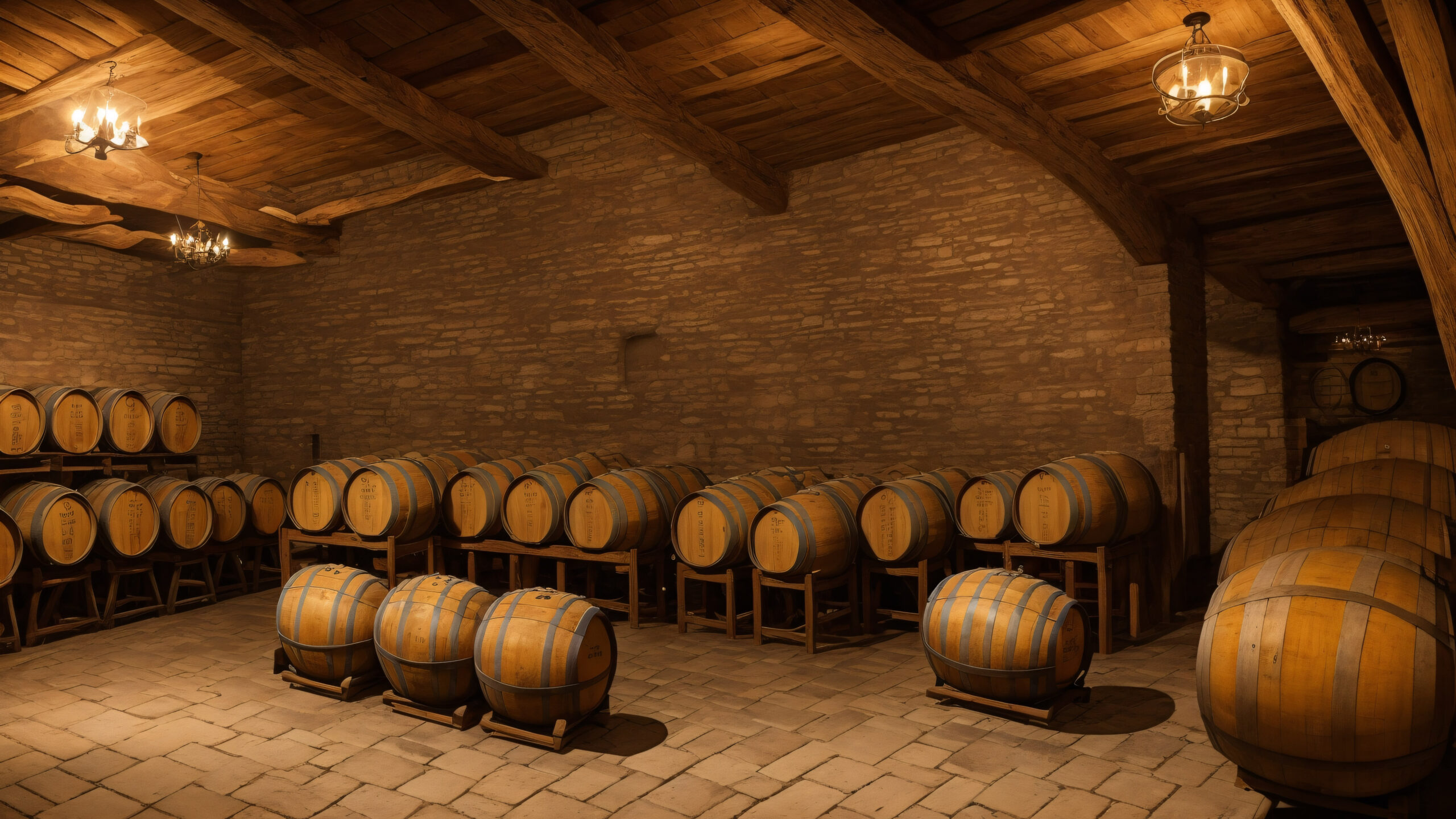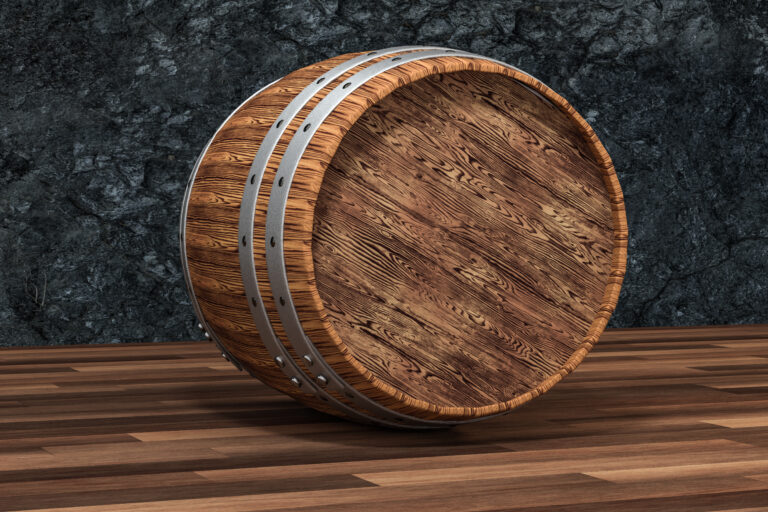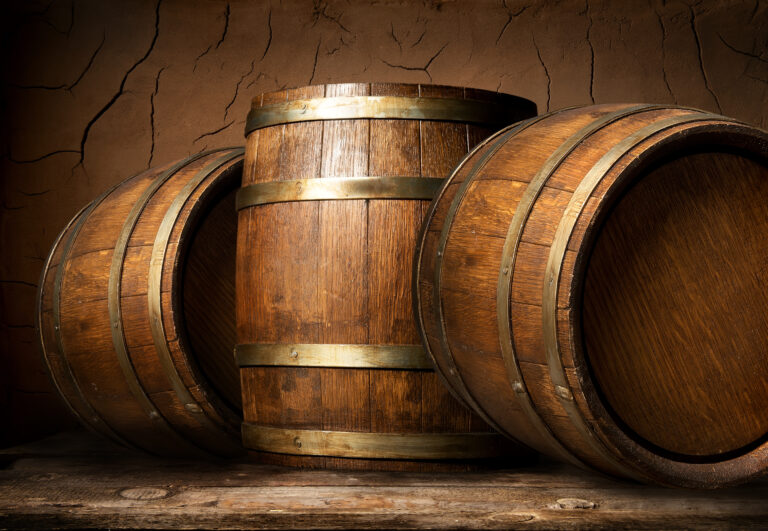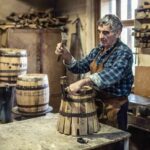You know, it’s pretty wild to think about, but the reason your glass of Scotch tastes so different from that Kentucky bourbon isn’t just about the grain or the still. It’s a love story with wood! As a whiskey patiently slumbers and matures in its barrel, the wood itself is constantly working its magic, infusing incredible flavor compounds that shape its very soul and characteristic taste. The type of wood, how much it’s been toasted or charred, and even the local climate – it all plays a huge part in crafting those distinctive regional flavors we whiskey lovers chase around the world. We’re talking about everything from smooth vanilla notes to rich caramel, earthy peat smoke, and delightful dried fruit profiles.
Barrels: The Unsung Heroes of Whiskey
These humble wooden vessels are absolute game-changers, truly defining the regional personalities of our favorite whiskeys.
- The Barrel Itself is Key: The kind of barrel chosen is undeniably one of the most crucial elements. Take Bourbon whiskey, for example. By law, it has to be aged in brand-new, heavily charred American oak barrels. This strict rule is precisely why you get those quintessential vanilla and caramel notes that are so distinctly bourbon. Scotch, on the other hand, often gets a second life in used barrels that previously held sherry or port wine. This clever reuse imparts those beautiful dried fruit, nutty, and spicy characteristics that are a hallmark of many Scotch whiskies.
- Charred to Perfection: The level of char or toast applied to the barrel’s interior also has a massive impact on the final flavor. Heavily charred barrels, often called “alligator char,” tend to produce whiskeys with darker, smokier, and more robust flavors. Think big, bold expressions. Lighter toasts, however, lead to more delicate, sweeter, and sometimes floral notes. Many craft distilleries are constantly experimenting with these char levels to carve out unique flavor profiles for their spirits.
- Location, Location, Location: Believe it or not, where a barrel sits in the warehouse matters. Whiskeys aged in the higher, warmer reaches of a rickhouse will experience more dramatic interaction with the wood, leading to deeper, more robust, and faster-developing flavors. Conversely, lower, cooler spots tend to produce lighter, more subtle tastes. Some master distillers even strategically move barrels between different locations to achieve a perfectly blended symphony of flavors.
- Beyond the Basics: The specific type of wood, the barrel size, and even factors like the barrel’s origin and its age all play a role in developing those truly regional characteristics. When all these elements align harmoniously, they create that elusive “sense of place” – that hard-to-define quality that makes a Kentucky straight bourbon taste unmistakably like Kentucky, or a Highland single malt Scotch sing of Speyside.
- The Alchemists of Flavor: At the end of the day, barrels are the true alchemists, transforming simple distilled spirits into memorable whiskeys with vibrant, distinct regional personalities. Their wood and char work a kind of magic, creating flavors far more intricate and compelling than what you’d get from just the base ingredients of any mash bill. So, the next time you’re savoring your favorite aged spirit, remember who the real heroes are: the humble barrels.
How Barrels Impact Flavor Based on Wood Type
The true secret behind whiskey’s incredible spectrum of flavors lies within the barrels themselves. The type of wood, the barrel size, and even the aging location all dramatically influence how a whiskey develops its unmistakable taste and aroma.
How Wood Type Affects Flavor
- Oak Dominance: Oak barrels are the most common choice, universally praised for imparting those classic vanilla and spice notes.
- American White Oak: This typically yields sweeter flavors, often reminiscent of coconut or maple syrup, contributing significantly to the bourbon flavor profile.
- European Oak: Varieties like Spanish oak or French oak contribute more robust flavors, hinting at clove or nutmeg, and are often found in Scotch whisky maturation.
- Beyond Oak: While oak reigns supreme, some experimental distillers delve into other wood types:
- Chestnut Wood Barrels: These can lead to delightful nuttier, chocolatey flavors.
- Fruit Wood Barrels: Woods like apple, cherry, or hickory can produce genuinely fruiter whiskeys, offering a different dimension of taste.
- Size Matters: The barrel size also plays a crucial role. Smaller barrels mean more surface area contact between the spirit and the wood. This typically results in faster aging and more pronounced wood flavors. Larger barrels, conversely, age whiskey more slowly, allowing the natural flavors to develop at a more measured pace, often leading to greater complexity.
- Climate’s Whisper: Where barrels are aged profoundly impacts flavor development. Warehouses in more extreme climates, with dramatic temperature swings, accelerate the chemical reactions between the wood and the whiskey. Hotter temperatures draw more oak compounds into the spirit, while colder weather causes the whiskey to seep deeper into the wood, extracting different nuances.
- A World of Flavors: The incredible variety of wood types, barrel sizes, and aging locations is precisely why whiskeys from different regions taste so distinct. Whether you lean towards the sweetness of bourbon, the spice of rye whiskey, or the peat smoke of Scotch, you have the humble whiskey barrel to thank for transforming simple distilled spirits into liquid gold. By understanding how barrels shape flavor, you can truly appreciate the intricate craft distillation behind your favorite whiskeys.
The Impact of Prior Contents: Wine, Rum, Etc.
The lineage of a barrel, meaning what it held before whiskey, has an enormous impact on the final flavor profile.
- Bourbon’s Oaky Rules: Take Kentucky bourbon. It must be aged in new, charred oak barrels. The charring process isn’t just for show; it caramelizes the wood sugars, imparting those beloved vanilla and smoky notes that are so characteristic of bourbon. By law, these barrels can only be used once for bourbon, which is why bourbon often exhibits a pronounced oak flavor.
- Scotch’s Second Life: In stark contrast, Scotch whisky often gets its character from used barrels, frequently those that previously held fortified wines like sherry or port. As the Scotch matures, it absorbs the rich, nutty, and dried fruit flavors left behind by the wine. Whiskies from the Highlands and Speyside regions are commonly aged in sherry casks, which significantly contributes to their trademark richness and sweetness. This is a key part of Scotch maturation.
- Irish Whiskey’s Versatility: Irish whiskey also frequently utilizes used barrels, often ex-bourbon barrels, which impart delightful hints of vanilla, caramel, and spice. Some Irish distilleries even use a mix of various used barrels to create incredibly complex, balanced blends. This strategic blend of barrel types, often referred to as wood management, has a profound influence on the flavor of the final product.
- Rum’s Rebirth: It’s not just whiskey that benefits from this barrel alchemy! Rum distilleries in vibrant places like Jamaica, Barbados, and Martinique cleverly repurpose used whiskey and wine barrels to age their aged rum. The rum then absorbs nuanced hints of the barrel’s prior contents – think delightful oak, fruit, and vanilla notes from bourbon barrels, or rich raisin and apricot notes from sherry casks. Some rum brands are even aged in a combination of barrel types to craft truly distinctive, often tropical-fruit-infused flavor profiles.
- The Art of Selection: Ultimately, the prior contents of a barrel and the duration of the spirit’s aging will determine its characteristic aroma, taste, mouthfeel, and finish. Master distillers are meticulous in their craft, carefully selecting specific barrels to achieve the precise flavor profile they envision. So, the next time you raise a glass of your favorite aged spirit, remember to offer a silent nod of thanks to the humble barrel – the true secret ingredient behind whiskey’s distinct regional tastes.
New Oak vs. Used Oak Barrels
The type of oak barrels employed in whiskey aging is absolutely fundamental to developing its distinctive regional flavors. New charred oak barrels, often crafted from American white oak, impart bold oak and vanilla flavors. Used barrels, having already cradled bourbon or sherry, offer a more subtle flavor contribution.
New Barrels
When a distillery opts for new charred oak barrels, the whiskey eagerly absorbs oak lactones from the wood. This imbues the spirit with lovely notes of coconut, vanilla, and caramel. The charring on the barrel’s interior also adds those appealing smoky flavors. Whiskeys matured in new barrels tend to be robust and assertive, showcasing intense oak and caramel notes, like the iconic Jack Daniel’s Tennessee Whiskey or the sophisticated Woodford Reserve Bourbon.
Used Barrels
Used barrels are those that previously aged bourbon, sherry, or port. Since most of the potent oak flavors have already been extracted by the first batch of whiskey or wine, these barrels exert a more subtle influence on the subsequent spirit. The whiskey will gently pick up residual flavors from its previous contents, such as delicate nutty or raisin notes from sherry or port barrels.
Whiskeys aged in used barrels generally present as smoother and mellower, with more nuanced and complex flavors. Consider the elegant Glenlivet or Glenfiddich single malt Scotch whiskeys, often matured in used sherry barrels, showcasing delightful fruit and spice. The use of used barrels is particularly prevalent in Scotch whisky production, where distillers aim to enhance the inherent fruity, nutty flavors of the barley without overwhelming the spirit with excessive oak.
In essence, used barrels cultivate more subtle, intricate flavors in the final whiskey, while new barrels deliver bold, robust oak-driven profiles. The strategic choice of barrel type is one of the profound secrets behind the distinct regional flavors of whiskeys from Scotland, Ireland, Tennessee, and Kentucky. The art of selecting the perfect barrel for aging their spirits is a crucial skill for master distillers worldwide.
Char Levels and Toasting Techniques
The meticulous charring and toasting of whiskey barrels are pivotal in crafting the distinctive regional flavors that define different whiskies.
Charring Levels
The level of charring refers to how intensely the inside of the barrel is burned before it’s filled with whiskey. Deeper charring, typically categorized as Level 3 (medium) and Level 4 (alligator char), leads to more robust, smoky, and complex flavors in the whiskey, often contributing notes of coffee and chocolate. Lighter charring, such as Level 1 (light) and Level 2 (medium light), allows more subtle flavors from the wood to come through, often emphasizing the grain.
- Bourbon whiskeys from Kentucky are famously aged in barrels with a heavy Level 4 char, which is a significant contributor to the bold caramel and vanilla flavors synonymous with bourbon.
- In contrast, many Irish and Canadian whiskeys often use barrels with a lighter char. This approach aims to highlight the inherent cereal notes and softer characteristics of their whiskies.
Toasting Techniques
The toasting of barrels also varies significantly between regions and individual distillers. Barrels can be toasted using direct fire or heated air, and for varying lengths of time and intensities. Heavier toasting, which gently browns the wood sugars, brings out more robust, nutty, and sometimes even spicy flavors from the wood before charring. Lighter toasting, on the other hand, leads to more delicate, floral, and sweeter notes.
- Scotch whiskies from Scotland are often aged in barrels that have been moderately toasted. This careful toasting helps create the balanced, often fruity and malty flavors found in many Scotch whisky expressions.
- Some US craft distillers are increasingly experimenting with heavy barrel toasting to produce distinctive nutty and spicy notes in their small batch whiskeys, adding another layer of complexity.
The precise charring levels, toasting techniques, and the specific types of wood used for barrels all intertwine to create the unique, complex flavor profiles in the world’s finest whiskies. Master distillers meticulously select and age their spirits in barrels that will perfectly complement and enhance the natural characteristics of their product. Understanding how barrels are crafted and the incredible chemical reactions that unfold within them truly reveals the secret behind whiskey’s diverse regional flavors.
Regional Cooperages and Barrel Variations
The barrels chosen for whiskey aging have a monumental impact on its final flavor. Regional cooperages, which craft barrels from locally-sourced wood, are absolutely vital in creating those truly distinctive tastes that give a whiskey its “sense of place.”
American Oak
If you’re enjoying a glass of bourbon or Tennessee whiskey, it was almost certainly aged in new, charred American oak barrels, typically sourced from white oak trees. This wood generously imparts those sweet notes of vanilla and caramel. The charring process itself contributes wonderful smoky flavors. For bourbon, the federal law specifically mandates the use of new charred oak barrels, ensuring its characteristic flavor.
European Oak
Single malt Scotch and Irish whiskeys frequently mature in used barrels, often constructed from European oak, such as Spanish oak or French oak. These barrels typically held sherry or port wine previously, imbuing the whiskey with delightful dried fruit flavors like raisins, prunes, and apricots. The wood itself provides more subtle oak and spice notes compared to its American counterpart, allowing other flavors to shine.
Japanese Oak
Some unique Japanese whiskies utilize barrels made from Mizunara oak, a distinct oak variety from Japan. This wood is known for imparting unique aromatic flavors such as sandalwood, incense, and coconut. The tight grain of Mizunara oak means the whiskey interacts with the wood much more slowly, often requiring longer aging periods to develop its complex and sought-after flavors.
Regional Craft Distillers
Many small craft distillers are passionately dedicated to creating truly regional spirits, aiming to showcase local ingredients and unique terroir. Some even collaborate with local coopers to produce barrels from wood that grows in their specific region, resulting in truly distinctive flavor profiles. For instance, in Canada, you might find some craft whiskeys and gins aged in barrels made from maple or birch wood, imparting unusual botanical and smoky notes.
The specific type of oak, the prior contents of the barrel, the charring level, and the utilization of local wood varieties all converge to create the profound “taste of place” in whiskeys and other spirits. Exploring the offerings of regional craft distillers and understanding the barrels they employ offers a fantastic opportunity to discover truly local flavors in your glass. Sampling whiskies from different regions side by side is a wonderful way to appreciate how cooperage profoundly influences the final product.
Climate and Aging Conditions
The barrels used to age whiskey are absolutely indispensable in cultivating the distinctive flavors of different whiskey regions. As whiskey lovingly interacts with the wood over years, or even decades, it absorbs vital compounds that impart notes of vanilla, caramel, and spice. However, the subtle differences in climate, oak species, and aging conditions between regions lead to noticeably different flavor profiles in the finished spirit.
Climate
The climate where barrels are aged significantly impacts how quickly whiskey extracts both flavor and color from the wood.
- In warmer climates, such as Kentucky, the whiskey penetrates the wood more rapidly, resulting in pronounced vanilla and caramel notes and a generally faster aging process.
- Colder climates, like much of Scotland, produce a slower interaction, leading to lighter, more delicate, and often fruiter flavors with hints of malt.
- Variations in humidity also play a crucial role. Drier air causes more alcohol to evaporate (the “angel’s share”), concentrating the remaining whiskey and its flavors.
Oak Type
The specific oak type used for barrels, whether American oak or European oak, contributes its own distinct flavors.
- American oak, typically the go-to for bourbon, imparts strong notes of vanilla, coconut, and spice.
- European oak, common for Scotch whisky, provides more subtle flavors of dried fruit, nuts, and chocolate. Some master distillers even use barrels made from oak sourced from specific forests to achieve a highly desired flavor profile.
Aging Conditions
How barrels are aged – encompassing warehouse conditions, barrel rotation, and the duration of aging – further distinguishes regional styles.
- In Kentucky, barrels are aged in towering multi-story rickhouses, with more intense spirit interaction occurring in the upper floors due to greater temperature fluctuations.
- Scotch whisky is often aged in traditional dunnage warehouses, typically on the ground floor, resulting in an earthier, often mustier character.
- Strategic barrel rotation and longer aging periods in the U.S. also contribute to a darker, richer spirit compared to the lighter, often more vibrant style of most single malts.
By grasping how climate, oak selection, and specific aging techniques sculpt flavor, you can truly appreciate the nuanced differences in various regional whiskies. While the distiller’s art is paramount, nature and time continue the crafting process within the barrel. The intricate interplay of all these factors ultimately determines a whiskey’s distinct “sense of place.”
Terroir and Water: Flavor From the Land
It’s a surprising truth, but the very land itself holds a profound influence on a whiskey’s flavor. The soil, water, and climate where the grains are cultivated and the whiskey is distilled and aged all contribute to its unique character. This concept is beautifully encapsulated by the term terroir.
- Soil’s Secret: The minerals and nutrients present in the soil where barley and other grains are grown directly impact their flavor. In turn, these specific grains infuse the whiskey with their unique characteristics. For example, barley grown in the peaty soil of Islay famously gives the single malts from that rugged Scottish island their distinctive smoky, earthy, and sometimes even medicinal taste. This is a prime example of how local ingredients matter.
- Water’s Essence: The local water, which is meticulously used to mash the grains and to dilute the spirit during distillation and aging, also profoundly shapes the whiskey’s flavor. Hard water with a higher mineral content tends to produce a fuller-bodied whiskey, while soft, pure water often results in a lighter, more delicate spirit. The crystal-clear waters of Speyside and the Highlands are credited with producing whiskies boasting delightful honeyed, fruity notes.
- Weather’s Whims: Regional weather patterns during the aging process in the barrel also create subtle yet significant flavor differences. Whiskeys aged in cooler climates tend to retain more of the direct oak flavor from the barrels. Conversely, warmer weather causes more dynamic interaction between the spirit and the barrel, resulting in richer, spicier whiskies with accelerated maturation. The maritime climate of Islay, with its salty air, not only accelerates aging but also infuses its single malts with unique sea salt aromas.
- Barrel’s Journey: Where the barrels are sourced and subsequently aged also has a significant effect. Used bourbon barrels, for instance, reliably impart notes of vanilla, caramel, and spice. Wine barrels influence the whiskey with delightful fruit and tannin flavors. And barrels crafted from different types of oak—American, Spanish, French, or Japanese Mizunara—all contribute their own distinctive characteristics.
- A Sip of Place: Ultimately, the land and the elements native to a specific place seamlessly merge within the whiskey, creating an authentic and unmistakable “sense of regional identity.” A single sip can truly evoke the rugged Highlands, the windswept islands, or Speyside’s rolling hills. That, my friends, is the undeniable power of terroir in the world of whiskey.
The Role of Barrels in Creating Distinct Regional Styles
It’s often said that the barrels are where the magic truly happens, and it’s absolutely true. The barrels used to age whiskey are fundamentally integral to developing the distinctive flavors of different regional styles.
- American Oak Barrels:
- American white oak barrels are the backbone for aging bourbon. They infuse the spirit with classic notes of vanilla, caramel, and spice.
- The charred interior of these new, charred oak barrels also provides delectable layers of toast, chocolate, and coffee flavors, which are quintessential to Kentucky bourbon and Tennessee whiskey.
- Refill Barrels:
- For rye whiskeys and other American expressions, refill barrels (those that have already aged bourbon) are frequently used.
- These provide more subtle oak and spice influences, allowing the inherent grain flavors of the rye or other whiskeys to genuinely shine through.
- European Oak Barrels:
- In both Ireland and Scotland, ex-bourbon barrels are commonly used, but what truly sets them apart is the frequent use of barrels that previously held fortified wines like sherry, port, or madeira.
- These unique casks contribute rich nutty, dried fruit, and tangy flavors that are iconic to Irish whiskeys and Scotch whisky, especially single malts.
- Barrel Location:
- The placement of barrels during aging, often referred to as barrel warehousing, plays a significant role in flavor development.
- Barrels aged on the upper floors of rickhouses (those impressive multi-story barrel aging warehouses) experience more extreme temperature variations. This causes the whiskey to move more vigorously in and out of the wood, extracting more potent oak flavors.
- Barrels on lower floors age at cooler, more consistent temperatures, developing lighter, more delicate flavors.
- Barrel Duration:
- The length of time spent aging in barrels directly correlates to the intensity and depth of flavor. Longer aging results in richer, deeper, and more complex flavors due to extended interaction with the wood.
- Most bourbons are aged a minimum of 2 years, Scotches a minimum of 3 years, and many premium, high-quality whiskies are often aged 6 years or more, allowing for greater flavor evolution.
The barrels that whiskey matures in, combined with the specific aging conditions like their location in the rickhouse and the duration of their slumber, all contribute profoundly to the development of distinctive regional styles, each boasting unique flavor profiles. Exploring how these variables influence your favorite whiskeys can lead to a much deeper appreciation of their complex aromas and tastes, a true journey for the palate.
Final Thoughts
So, there you have it – the inside scoop on how those unassuming barrels profoundly impact the flavor of your beloved whiskeys. The next time you take a contemplative sip of a bold bourbon, a nuanced Scotch, or a smooth Irish whiskey, take a moment to truly appreciate the subtle, magical flavor notes imparted by that charred oak. Barrels might seem like a small detail in the grand, intricate scheme of distilling spirits, but they possess an outsized influence on creating the distinctive regional characteristics that whiskey drinkers around the globe have come to know and love. These wooden vessels are truly the unsung heroes in the whiskey-making process. So, raise your glass high and toast to the humble barrel—without them, whiskey as we know and adore it today simply wouldn’t exist. And next time you’re fortunate enough to visit a distillery, be sure to give those magnificent charred oak barrels a knowing nod of thanks. They’ve absolutely earned it.







